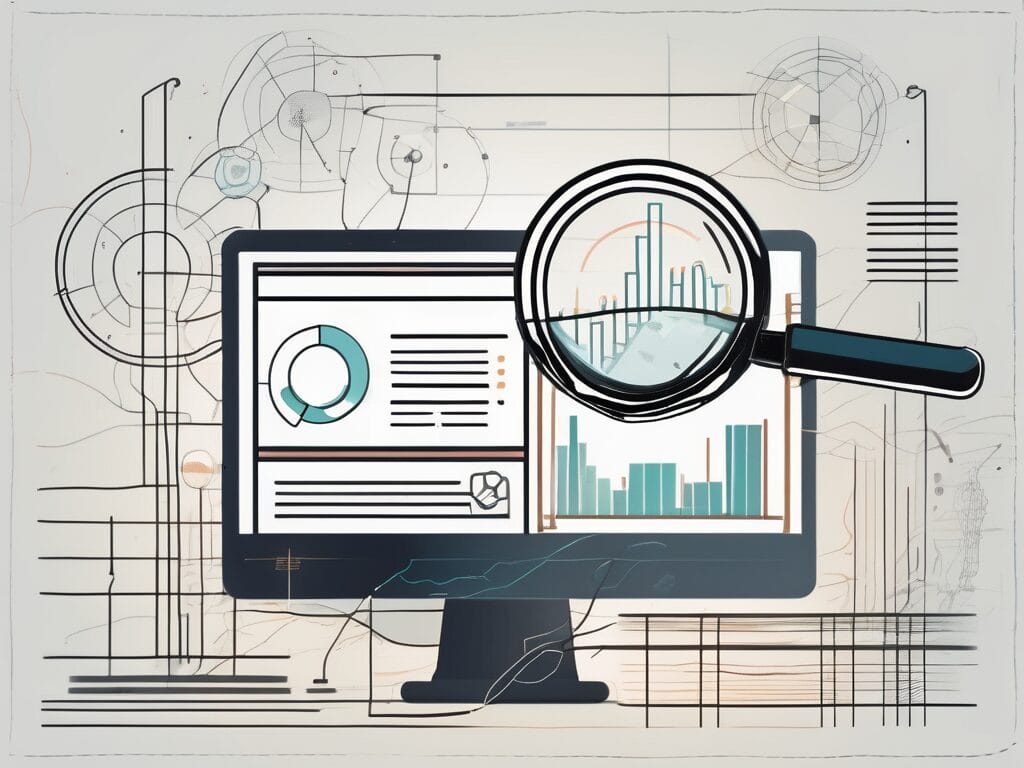Developing a functional user experience (UX) design for your technical project may seem an inconsiderable task until you start losing your clients due to poor interaction experience. The latest research shows that a staggering 90% of users abandon an app because of its poor performance. That’s why your company should pay special attention to the UX design testing stage to ensure seamless and enjoyable experiences.
Besides, there’s the question of how to be sure that your UX design is appreciated by your users? After all, a positive user experience goes beyond simple visual aesthetics. Good UX design can directly lead to increased conversions, customer loyalty, and brand reputation.
In this article, Inoxoft’s designers explain how to navigate the crucial stage of UX design development based on our experience. We’ll delve into top strategies for uncovering the root of user problems and validating design solutions that look good and resonate with your target audience. Read on!
- Key Concepts in UX Design Testing
- How to Define UX Problems in Your Project
- Identifying UX Issues
- Analyzing User Feedback
- Prioritizing UX Problems
- UX Testing Methods
- Usability Testing
- A/B Testing
- Heatmap Analysis
- Solution Validation in UX Design
- Prototyping and Iteration
- User Acceptance Testing
- Measuring UX Success
- Continuous Improvement in UX Design
- Incorporating User Feedback
- Regular UX Audits
- Staying Updated with UX Trends
- Inoxoft’s Experience in Testing UX Design and Evaluating Ideas
- Conclusion
Key Concepts in UX Design Testing
Before delving into the specifics of testing UX design, it is important to understand some key concepts:
- User feedback is invaluable in the testing process. By collecting insights directly from users, you gain a deeper understanding of their needs, expectations, and pain points.
- UX testing is an iterative process. It involves continuously refining and improving designs based on feedback and analysis.
- Incorporating accessibility testing in UX design is essential to ensure inclusivity. By testing for factors such as screen reader compatibility, color contrast, and keyboard navigation, designers can create a more inclusive experience for all users, including those with disabilities.
How to Define UX Problems in Your Project
Every great design starts with understanding the problem it aims to solve. In UX design, this means identifying the pain points your users experience. They can be anything that frustrates, confuses, or slows users down when trying to achieve their goals. For example, most cart abandonments in eCommerce happen due to poor UX like complicated checkout process, website errors, etc.
Below, here’s an explanation of how to find the actual problems for your users.
Identifying UX Issues
When testing UX design, it is essential to identify and address any potential UX issues. This can be achieved through different methods such as user testing, heatmaps, and analytics. By observing how users interact with a product or service, you can uncover pain points, confusion points, or areas of improvement.
For example, let’s consider e-commerce website development. User testing may reveal that customers often struggle to navigate through the checkout process, leading to shopping cart abandonment. This feedback should prompt the UX team to analyze the issues in the checkout flow and make necessary improvements.
Analyzing User Feedback
Once user feedback has been collected, it is important to analyze and interpret the data. This analysis helps identify patterns and trends, providing actionable insights for improving UX design.
Inoxoft’s UX team employs various analytics tools, such as Google Analytics and Hotjar, to gain a comprehensive understanding of user behavior on the e-commerce website. Our team uses metrics like bounce rate, time on page, and conversion rates to gauge user engagement and identify areas of improvement. It’s also necessary to conduct surveys and interviews to gather qualitative feedback, allowing them to delve deeper into the users’ thoughts, emotions, and motivations.
Prioritizing UX Problems
Not all UX issues are created equal. Some may have a more significant impact on the overall user experience than others. Prioritizing these problems ensures that resources are allocated effectively for maximum impact. Inoxoft, with their expertise in software development, uses a systematic approach to categorize and prioritize UX problems based on severity and potential impact on user satisfaction.
Once the UX issues have been identified and analyzed, Inoxoft’s UX team collaborates with stakeholders to determine the priority of each problem. They consider factors such as the frequency of occurrence, the number of users affected, and the potential business impact. This prioritization process allows them to focus their efforts on solving the most critical issues first, ensuring that the user experience is improved in the most impactful way.
UX Testing Methods
After identifying customer pain points, you should understand their experience. This is where UX testing methods come in. These are techniques for observing and gathering user feedback on your design. By putting your product or prototype in front of real users, you can witness their interactions firsthand and gain invaluable insights.
Usability Testing
Usability testing involves observing users as they interact with a product or service, performing tasks and providing feedback. This method helps validate design decisions, uncover usability issues, and determine the effectiveness of the user interface. Inoxoft conducts rigorous usability testing to refine their UX designs and ensure a smooth user experience.
During usability testing, Inoxoft focuses on various aspects such as task completion rates, error rates, and user satisfaction levels. By analyzing user interactions in real-time, designers can gain valuable insights into how users navigate through the product and identify pain points that need to be addressed. This iterative process of testing and refining helps Inoxoft create intuitive and user-centric designs that resonate with their target audience.
A/B Testing
A/B testing involves comparing two or more variations of a design element to determine which one performs better. By presenting different versions to users, valuable insights can be gained regarding user preferences and behaviors. Inoxoft leverages A/B testing to optimize their UX design choices, resulting in more user-friendly and effective solutions.
Through A/B testing, Inoxoft can assess the impact of design changes on key performance indicators such as conversion rates, click-through rates, and user engagement metrics. By analyzing the data collected from these tests, designers can make data-driven decisions to enhance the overall user experience.
Heatmap Analysis
Heatmaps provide visual representations of user behavior on a website or application. They show areas of high and low interaction, allowing designers to identify hotspots and areas that need improvement. By utilizing heatmap analysis, Inoxoft can pinpoint areas where users may encounter challenges, enabling them to make informed design adjustments.
By analyzing heatmaps, you can gain insights into user engagement patterns, such as where users spend the most time on a page or where they tend to drop off. This data-driven approach helps designers prioritize design changes that will have the most significant impact on user experience.
Solution Validation in UX Design
When it comes to solution validation in UX design, prototyping and iteration play a crucial role in ensuring the success of a product. Prototyping allows designers to create tangible representations of their ideas, enabling them to gather valuable feedback and insights from users. By iterating on these prototypes based on real-world interactions, designers can refine their designs to better meet user needs and expectations. Inoxoft excels in utilizing a variety of prototyping tools and techniques to develop interactive prototypes that closely simulate the final product, facilitating a more user-centric design process.
Furthermore, user acceptance testing is another integral aspect of validating UX solutions. By involving end-users in the testing process, designers can ensure that the final product aligns with user preferences and requirements. This collaborative approach not only validates the design but also fosters a sense of ownership among users, leading to higher levels of user satisfaction. Inoxoft places great emphasis on user acceptance testing to validate and refine their UX solutions, ultimately delivering products that resonate with their target audience.
Prototyping and Iteration
Prototyping is a crucial step in validating a solution before its full implementation. It allows designers to obtain user feedback and make iterations based on real-world interactions. Inoxoft uses various prototyping tools and techniques to create interactive prototypes that simulate the final product. This approach enables them to gather valuable user insights and refine designs iteratively.
User Acceptance Testing
User acceptance testing involves involving end-users to ensure that the final product meets their needs and expectations. This collaborative approach provides valuable feedback and insights that help shape the final design. Inoxoft involves end-users in user acceptance testing to validate and refine their UX solutions, ensuring a high level of user satisfaction.
Measuring UX Success
Measuring and evaluating the success of UX design is essential to identify areas of improvement and track progress over time. Inoxoft employs various metrics and analytical tools to assess the effectiveness of their UX design solutions. This data-driven approach enables them to measure key performance indicators, make data-backed decisions, and continuously enhance user experiences.
Continuous Improvement in UX Design
The world of technology is ever-evolving, and user needs and expectations along with it. What might be a stellar design today could feel outdated tomorrow. That’s why continuous improvement is the cornerstone of exceptional UX design. This section dives into the ongoing process of refining your design to keep it fresh, relevant, and user-friendly.
Incorporating User Feedback
One of the cornerstones of UX design is the integration of user feedback throughout the development process. Inoxoft values user input and actively encourages feedback from their clients and end-users. By incorporating user feedback, they can address pain points, implement improvements, and ensure that their UX design solutions are tailored to meet user needs.
Regular UX Audits
Regular UX audits are essential to identify areas for improvement and ensure that UX design remains aligned with user expectations. Inoxoft regularly conducts thorough UX audits to evaluate the effectiveness of their designs, assess usability, and identify any potential issues. These audits provide valuable insights that drive continuous improvement and keep their UX solutions relevant and user-centric.
Staying Updated with UX Trends
As the field of UX design evolves, staying current with the latest trends and best practices is crucial. Inoxoft, being a prominent software development company, prides itself on its commitment to ongoing professional development. By staying updated with the latest UX trends, they ensure that their UX design solutions remain innovative, modern, and aligned with industry standards and user expectations.
Inoxoft’s Experience in Testing UX Design and Evaluating Ideas
Inoxoft’s deep commitment to delivering exceptional user experiences is exemplified in our recent project: an on-demand delivery app for essential home fuels. Through meticulous UX design testing, we ensured that the app not only meets but exceeded user expectations. Here’s a look at how we achieved this:
- Usability testing with diverse demographics helped us develop a seamless, easy-to-navigate interface.
- A/B testing on order workflows established quick, efficient ordering processes.
- UX research led to the inclusion of real-time tracking, providing users peace of mind about delivery status.
- Security audits and user feedback ensured trusted and familiar payment options.
- Iterative testing balanced notification frequency and relevance, ensuring timely and helpful updates.
Conclusion
Testing UX design is an essential step in delivering outstanding user experiences. By understanding the importance of testing, defining UX problems, and validating solutions, organizations like Inoxoft can enhance their UX design process, resulting in improved customer satisfaction and business success. Incorporating user feedback, measuring UX success, and continuously seeking improvement are key pillars in making UX design a strategic asset.
Inoxoft’s approach to UX design is not mere aesthetics; we focus on creating intuitive and seamless experiences that delight users and drive engagement for your business. When you work with Inoxoft, you’re not just getting a UX design agency – you’re partnering with a team that is dedicated to your success. We take the time to understand your business goals, target audience, and industry trends to deliver customized solutions that meet your specific needs. Whether you’re looking to revamp an existing product or create a brand new digital experience, our team is here to guide you every step of the way.
Contact us to develop UX design solutions that drive your business performance forward.
Frequently Asked Questions
When should I run UX design validation?
Run UX design validation whenever you're developing a new product, introducing significant changes to an existing one, or suspecting usability problems. It's crucial throughout the design process, not just at the end.
How many users do I need for UX design testing?
While there's no magic number, usability testing with 5-7 users can uncover 80% of usability issues. Focus on recruiting users representative of your target audience.
What if I don't have existing users for a brand new product?
Look for potential users who share the demographics and needs of your target market. Recruit through online platforms or reach out to user research agencies.
How do I analyze and interpret UX testing results?
Look for recurring patterns in user behavior and feedback. Identify pain points, areas of confusion, and elements that users find intuitive. Group these findings into themes to prioritize design changes.








